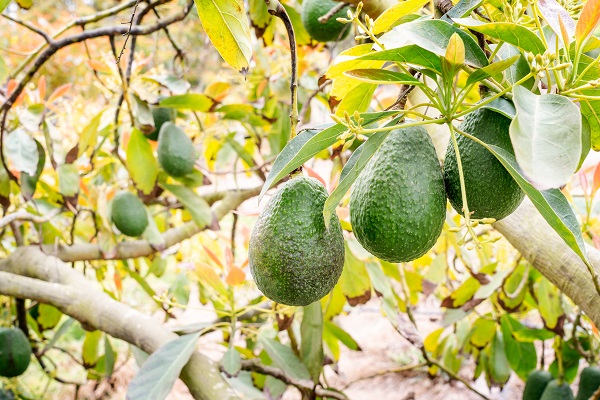
Salads, pasta, smoothies, and nutritious breakfasts with toast take on a delicate flavor when you add avocado with its creamy texture. This fruit can be used to prepare various dishes, or you can eat it with a spoon, receiving many vitamins, fatty acids, and natural detoxification. You can find tons of information about how beneficial avocados can be for our health, but the main thing is that they are delicious.
You can try avocado farming for yourself. It is the perfect way to turn your garden into an edible paradise. How easy is it? Success largely depends on choosing the right tree, proper planting, and fertilization, pruning and harvesting.
Selecting the Right Avocado Variety
Growers should care about selecting the correct avocado variety based on their climate and weather conditions. Avocado trees come in three main types.
Mexican Avocado (Persea americana var. drymifolia)
Mexican avocados are cold-resistant, they grow in regions where other varieties cannot be successful. This type of our favorite fruit looks like an evergreen shrub with simple leaves and greenish flowers. These avocados have elongated, smooth, and very thin skin. They are dark greenish-brown and weigh no more than 8 ounces (240 grams).
Guatemalan Avocado (Persea americana var. guatemalensis)
Also known as the winter avocado, this type is unique as it has thick, textured skin and small seeds. They boast a fat content ranging from 20 to 26% and are typically harvested during winter.
This particular type of avocado can withstand salinity and chilly temperatures better than the West Indian variant but not quite as well as the Mexican varieties. Additionally, they can thrive at altitudes up to 6,500 feet (2,000 meters). So, it’s a little bit easier to find the proper climate for this avocado tree. The plant initially produces smooth cotyledons and reddish buds as it begins to sprout.
West Indian Avocado (Persea americana var. americana)
It is a large fruit with thin skin and soft pulp. It tastes slightly bitter and has 20% oil. The tree can’t tolerate cold and can’t grow in places with altitudes above 3,200 feet (1,000 meters.)
Avocado Tree Planting
Location: If you’re thinking about how much sun an avocado tree needs, then it is crucial to choose a pretty sunny location. It should also be protected from the wind. These trees require temperatures between 60°F to 85°F (15 to 29°C) for optimal growth.
Soil Preparation: Avocado trees prefer slightly acidic to neutral soil. Growers should test and amend soil pH while ensuring good drainage to prevent root rot. Loose soil that allows excess water to drain away easily is essential.
Planting: The size of the hole for planting should be twice as wide as the root ball and at the same depth. Gently remove the plant from its container, untangle the roots, and place it in the hole. Fill the gap with soil, gently firming it around the base of the tree, and water thoroughly.
How to Care for Your Avocado Tree
It’s impossible to grow avocados without water, so gardeners must water these plants deeply on a regular basis. It’s also crucial to keep the soil consistently moist and avoid overwatering, which can cause root rot. Let the top few inches of soil dry out slightly between watering procedures.
You can determine when to water using a moisture meter or doing the finger test (insert your finger in the ground to check the moisture level). Adjust the watering frequency based on weather conditions and the soil’s moisture level.
The plant needs a deep layer of mulch, such as redwood bark or another organic material. The best way to mulch around a tree is to leave an open ring around the trunk. It is recommended to leave the leaves that have fallen from the tree on the soil.
Avocado fertilization should be done twice a year. It is best to fertilize plants when the soil is moist for quick absorption by the roots. In regions with hot summers, frequent fertilization may be needed. Nitrogen, phosphorus, potassium, magnesium, and calcium are essential nutrients for optimal plant growth and fruit production. Spread the components evenly around the tree’s base using a hand or broadcast spreader set to half the recommended strength.
Pruning an avocado tree well is crucial for health and a good harvest. When pruning branches, leave one-third of the original length to ensure enough leaf area for photosynthesis and energy production.
Use sanitized and sharp tools to prevent disease transmission for healthy tree pruning. Remove dead or damaged limbs, cutting them as close to the trunk as possible without harming healthy tissue.
Growing avocado trees at home can be a satisfying and pleasurable experience. By selecting a suitable variety, providing proper care, and being patient, you can grow your own avocado tree and savor its fruits. Embark on a successful journey of homegrown avocado farming.
Related Articles & Free Email Newsletter Sign Up
How to Grow Bananas in a Greenhouse
How to Grow Lime Trees in Your Home or Greenhouse




Comment here